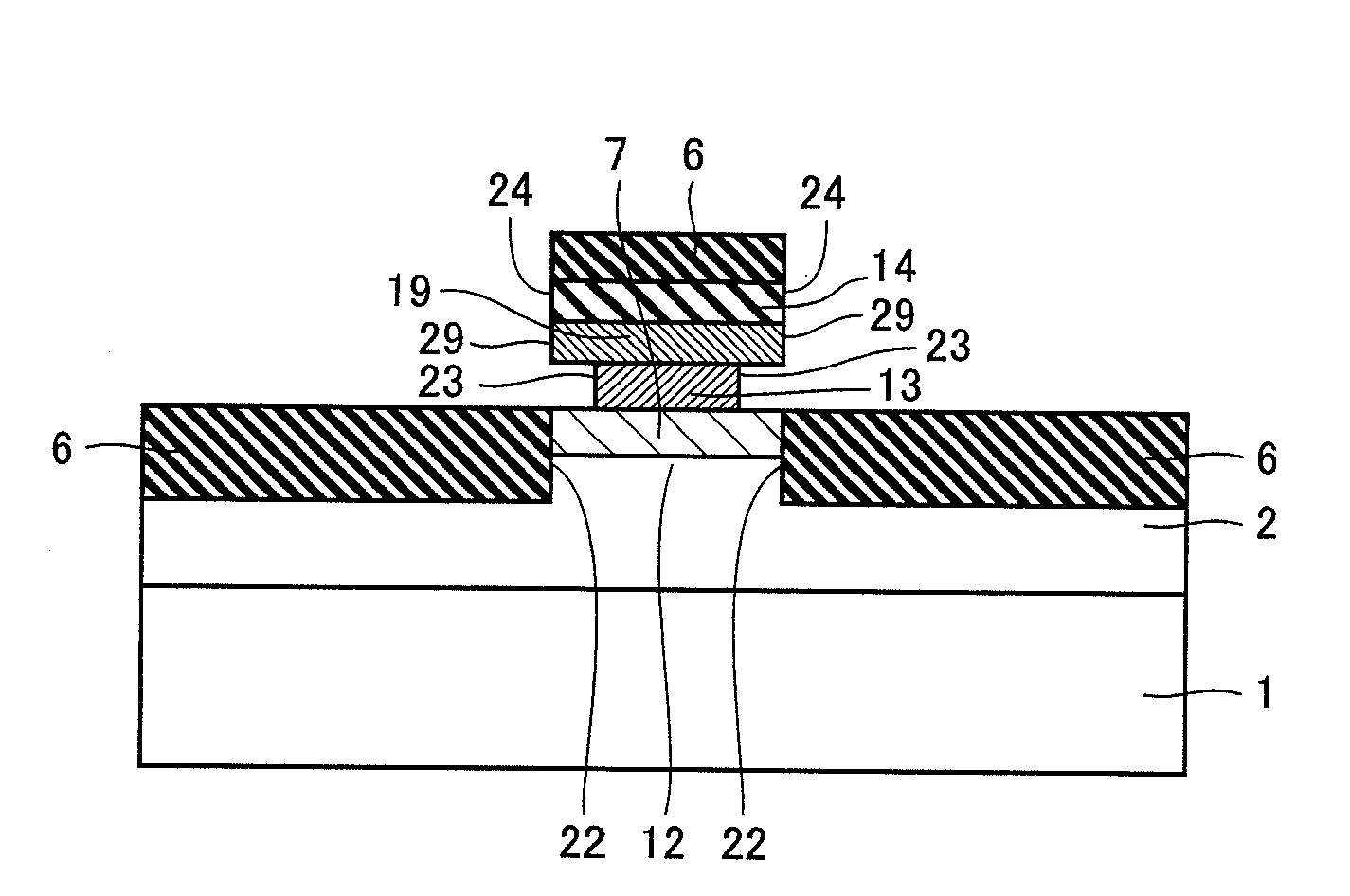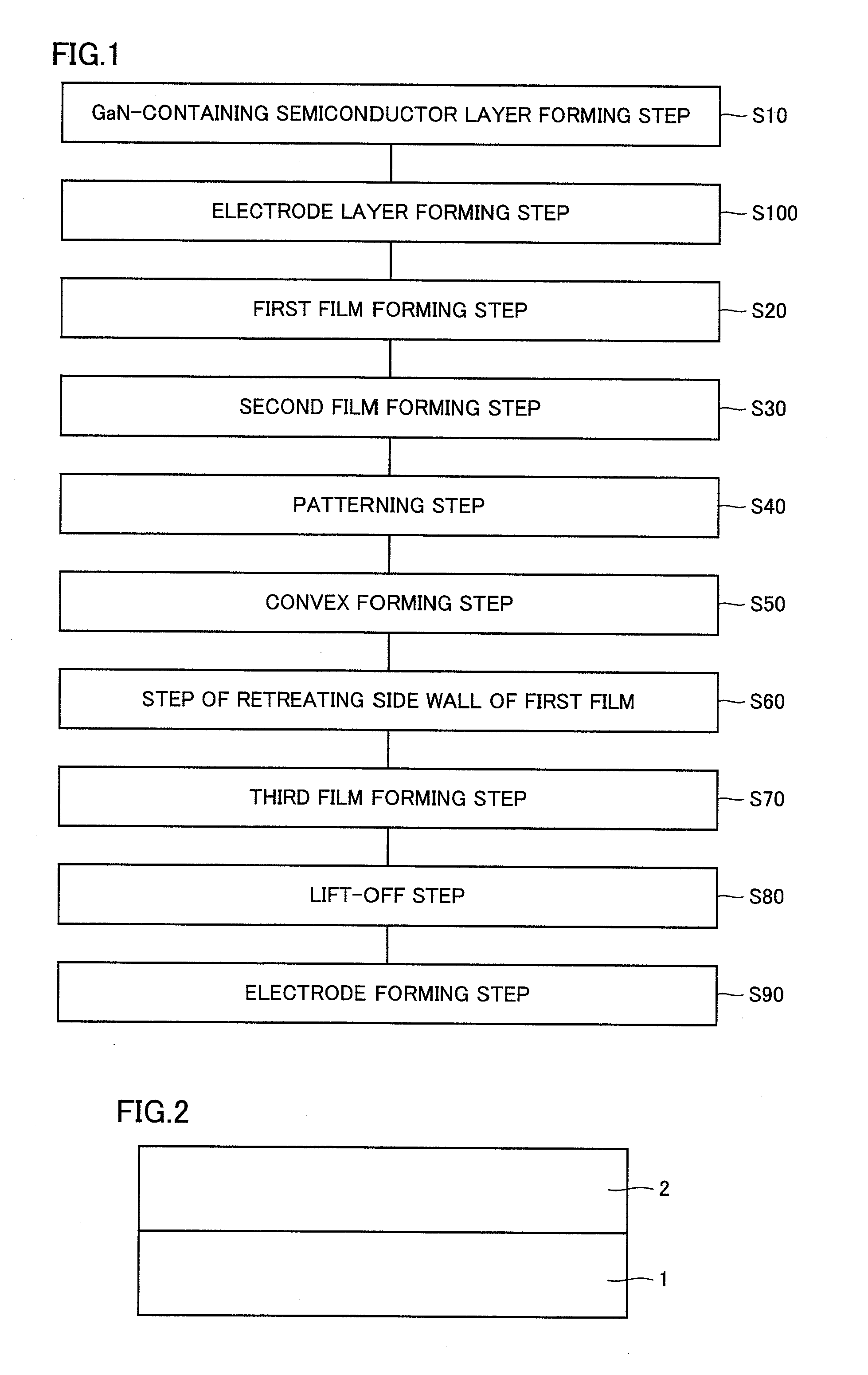Manufacturing method of a semiconductor element
a manufacturing method and semiconductor technology, applied in the field of manufacturing methods of semiconductor elements, can solve the problems of low production yield of semiconductor elements, difficult suffer from the manufacturing methods of the semiconductor elements described above, so as to reduce the manufacturing cost of semiconductor elements, and reduce the manufacturing cost
- Summary
- Abstract
- Description
- Claims
- Application Information
AI Technical Summary
Benefits of technology
Problems solved by technology
Method used
Image
Examples
first embodiment
[0030]Referring to FIGS. 1 to 11, a manufacturing method of a compound semiconductor element according to the invention will be described below.
[0031]In the manufacturing method of the compound semiconductor element according to the invention, as shown in FIG. 1, a step (S10) of forming a GaN-containing semiconductor element is first executed. In this step (S10), as shown in FIG. 2, a GaN-containing semiconductor layer 2 is first formed on a main surface of a substrate 1 by an epitaxial growth method or the like. Substrate 1 may be made of, e.g., GaN, sapphire or the like which allows formation of a GaN-containing semiconductor layer on its main surface. GaN-containing semiconductor layer 2 may have a structure in which a plurality of GaN-containing semiconductor layers are layered according to required characteristics of the compound semiconductor layer to be formed. For example, when a semiconductor laser element is to be formed as the semiconductor element, and GaN-containing sem...
second embodiment
[0048]Referring to FIG. 12, a second embodiment of the manufacturing method of the compound semiconductor element according to the invention will be described below.
[0049]The second embodiment of the manufacturing method of the compound semiconductor element according to the invention basically includes substantially the same steps as the manufacturing method of the compound semiconductor element already described with reference to FIGS. 1 to 11 except for forming the layer used as a mask when forming ridge portion 12. More specifically, in the second embodiment of the manufacturing method of the compound semiconductor element according to the invention, steps (S10-S40) in the manufacturing method shown in FIG. 1 are first executed substantially in the same manner. Consequently, the structure shown in FIG. 4 is formed. Similarly to the case of the foregoing first embodiment, resist film 5 is used as the mask, and the RIE using a fluorine-containing etching gas is executed to remove ...
third embodiment
[0052]A third embodiment of the manufacturing method of the compound semiconductor element according to the invention basically has the same structure as the manufacturing method of the compound semiconductor element according to the invention shown in FIGS. 1 to 11, except for that the etchant used in the step (S60) of retreating the side wall of the first film and the lift-off step (S80) is not an alkaline solution but is a mixed acid made of phosphoric acid, nitric acid, acetic acid and water. The mixed acid may be a mixture of 80 wt. % of phosphoric acid, 5 wt. % of nitric acid, 10 wt. % of acetic acid and water. This can achieve substantially the same effect as the first embodiment of the invention.
[0053]In the case where the mixed acid is used as described above, mask layer 14 may likewise be made of a material other than SiO2, and it may be made of one of silicon oxide (SiO), silicon nitride (SiN), zirconium oxide (ZrO2), tantalum oxide (Ta2O3), lanthanum oxide (La2O5), ceric...
PUM
 Login to View More
Login to View More Abstract
Description
Claims
Application Information
 Login to View More
Login to View More - R&D
- Intellectual Property
- Life Sciences
- Materials
- Tech Scout
- Unparalleled Data Quality
- Higher Quality Content
- 60% Fewer Hallucinations
Browse by: Latest US Patents, China's latest patents, Technical Efficacy Thesaurus, Application Domain, Technology Topic, Popular Technical Reports.
© 2025 PatSnap. All rights reserved.Legal|Privacy policy|Modern Slavery Act Transparency Statement|Sitemap|About US| Contact US: help@patsnap.com



